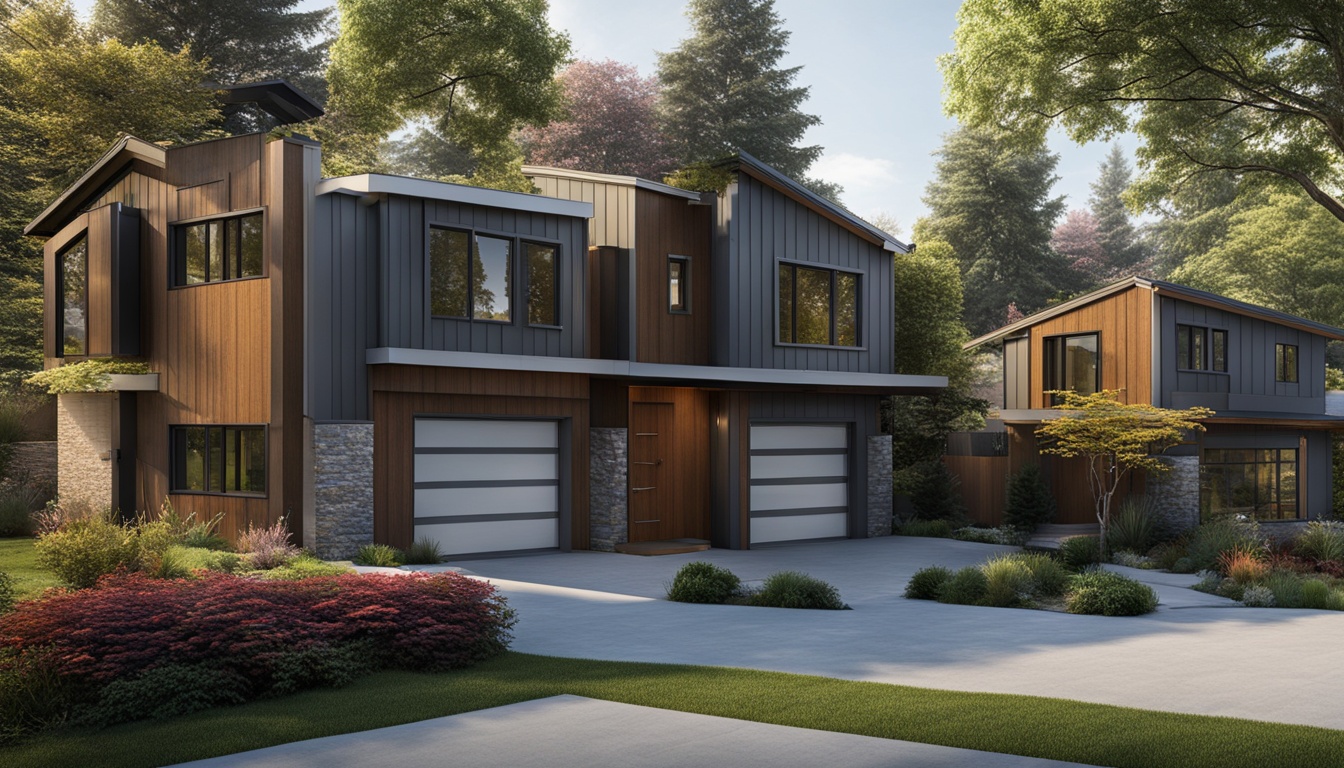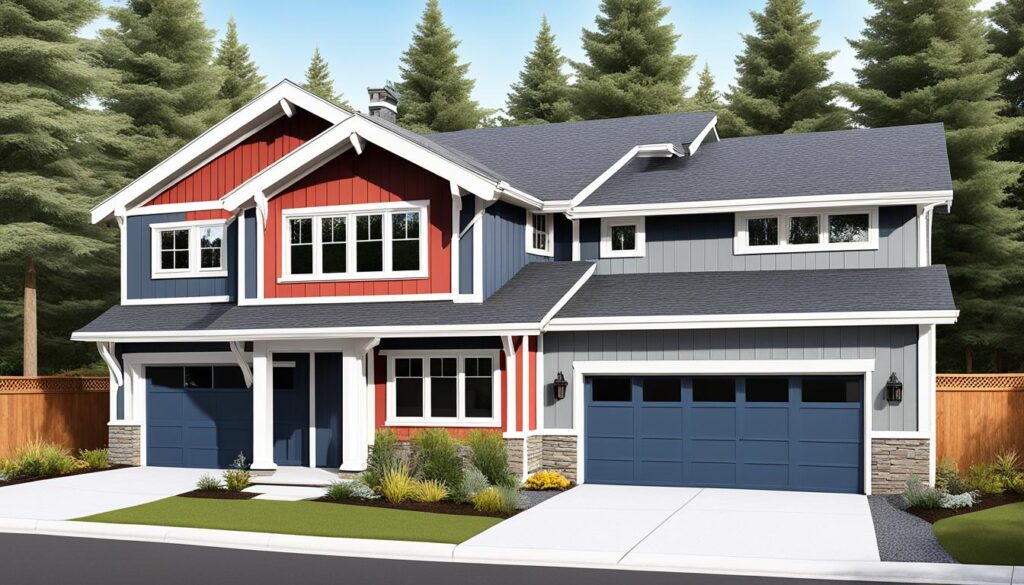
Detached ADUs may raise a property’s value more than attached ones. Deciding on the right Accessory Dwelling Unit (ADU) involves many aspects. Think about space, budget, privacy, and return on investment (ROI).
An attached ADU works well for small properties. It might expand up or out without more land. Attached units can be cheaper, especially when changing garages or basements.
In Oakland’s Rockridge District, an attached ADU reached 744 square feet. That’s almost twice the size of a detached one in the same area.
Detached ADUs give more privacy and might earn higher rent. But they require more land and cost more to build. They need separate utilities and sometimes solar panels. Yet, they can really increase a home’s value.
Garage Conversion ADUs are a clever way to add space on a budget. They change existing buildings into living areas. This option can be done faster and boost a home’s worth.
Knowing each ADU type’s pros and cons is key. Homeowners should think about local rules, space, and how they’ll use the ADU. This helps pick the best ADU for their home.
Understanding Attached, Detached, and Garage Conversion ADUs
Accessory Dwelling Units (ADUs) help with housing shortages. They come in different designs for various needs. Knowing the differences between attached, detached, and garage conversion ADUs is key. Each type offers unique characteristics and uses. This impacts their construction and overall features.
Definition of Each ADU Type
Attached ADUs share walls with the main house. They are cost-effective because they use the same utilities. Detached ADUs are separate buildings that offer more privacy. They might cost more to build but can bring in more rent. Garage conversion ADUs turn garages into living spaces. This is great in cities where space is tight.
Key Characteristics

- Attached ADUs: Cost-effective due to shared services, often used for housing family members or as a rental unit.
- Detached ADUs: Higher privacy, potentially higher construction costs, yet yielding higher rental income.
- Garage Conversion ADUs: Utilize existing structures, requiring careful assessment of structural integrity and meeting local zoning regulations.
Common Uses and Examples
Knowing the designs and uses of ADUs is helpful. Attached ADUs are good for in-law suites. They provide closeness and privacy. Detached ADUs work well as guest houses or rentals. They offer an individual living space.
Garage conversions do well in packed cities. They boost a property’s worth and use. Attached units, over-the-garage apartments, and detached cottages show ADUs’ variety. Any ADU can raise a property’s value and offer extra income, making it a smart choice.
Choosing Between Attached, Detached, and Garage Conversion ADUs
When picking the right ADU, think about your property, rules, what you want it for, and your likes. Attached ADUs are great if you don’t have much room. They’re handy and make living together easier. But, they can make your house smaller and less private. In places where every inch counts but you still want to be close, these are good.
Detached ADUs are for those who want their own space. They can be as big as 1,200 square feet. Perfect if you want to be independent but stay on the same property. These ADUs can also make your property worth more. And in California, there’s no max size for turning detached places into ADUs.
Garage Conversion ADUs are a smart choice if you’re looking to save money. Turning a two-car garage into an ADU can start at $120,000. This is good if the garage is still strong and can be made to follow the rules. However, garages over 30 years old might need a lot of work to be okay. In many cities, like those around San Diego, you’re allowed to knock it down and build new in the same spot. To find the best ADU for you, look at how your property is set up, local laws, and money matters. This will help you pick the right ADU. It will make your property more valuable and improve how you live.